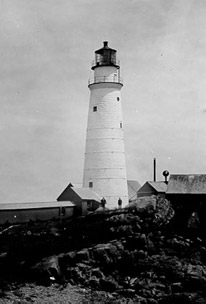Almanac/Shine a Light
Air Date: Week of May 23, 2003
This week, facts about lighthouses. The feast day of Saint Venerius, the patron saint of lighthouse keepers, is in May.
Transcript
CURWOOD: Welcome back to Living on Earth. I'm Steve Curwood.
[MUSIC: Manfred Mann “Blinded by the Light” Best of Warner Archives - Warner (1996)]
CURWOOD: Many a mariner has scanned the horizon for the beam of light that signals the presence of dangerous shoals. Some of these sailors may have offered up a prayer of thanks to St. Venerius, the patron saint of lighthouse keepers. May holds the Annual Feast Day of Venerius. No one is quite sure how this Catholic Bishop from Milan became associated with the solitary folk who shine a light on the dangerous out-croppings of the seas.
Lighthouses have been around for ages before Venerius died in the fifth century. The most celebrated, of course, the 40-story plus lighthouse of Alexandria. One of the seven wonders of the ancient world, it marked the Egyptian port with a beacon that reflected fire of the giant mirror. To help ships navigate during the day, some lighthouses are painted with distinctive patterns. At night, lighthouses send out different flash patterns called their characteristic. Sailors can consult a chart to figure out their position based on the pattern of alternating light and darkness, and the different colors of light they see.
 The Boston Harbor Light on Little Brewster Island was the first lighthouse established in America. It was first lit on September 14, 1716. (Photo: USCG) The Boston Harbor Light on Little Brewster Island was the first lighthouse established in America. It was first lit on September 14, 1716. (Photo: USCG) |
 The Makapuu Point Light on Oahu Island, first established in 1909, has a lens that's more than eight feet across and can beam out a light that can be seen for 28 miles. (Photo: USCG) The Makapuu Point Light on Oahu Island, first established in 1909, has a lens that's more than eight feet across and can beam out a light that can be seen for 28 miles. (Photo: USCG)
Nowadays, it's the job of the coastguard to make sure the lights are on in more than the 300 remaining American lighthouses. And they've taken a load off the shoulders of Saint Venerius. The traditional profession of lighthouse keeper became obsolete in the U.S. when the last light was automated in 1998. And for this week, that's the Living on Earth Almanac. [MUSIC] Links
|





